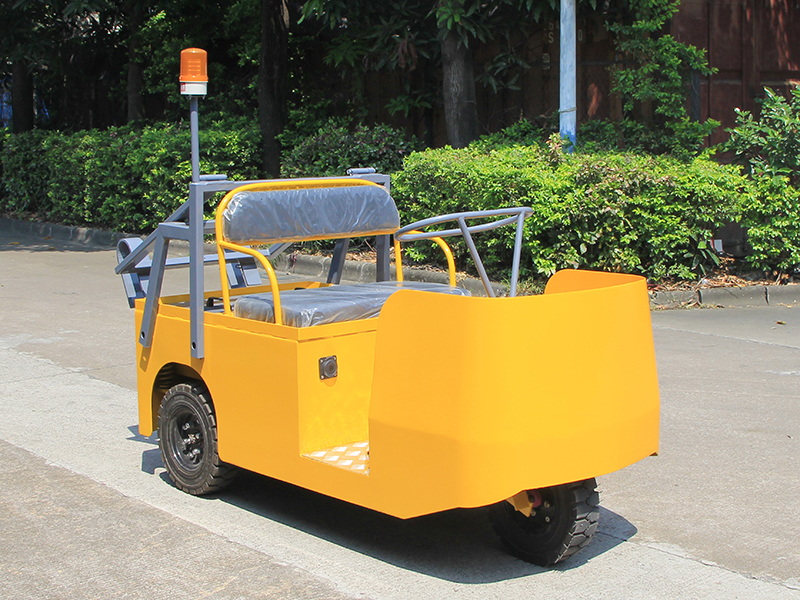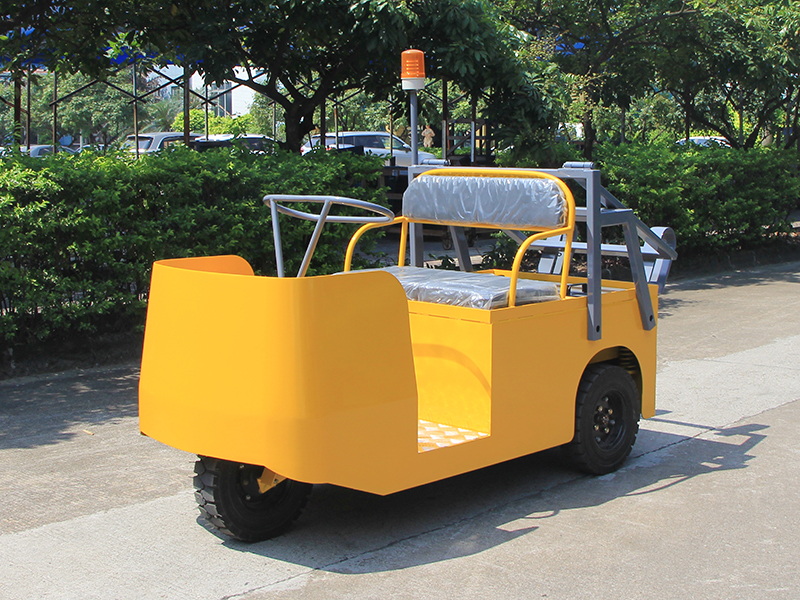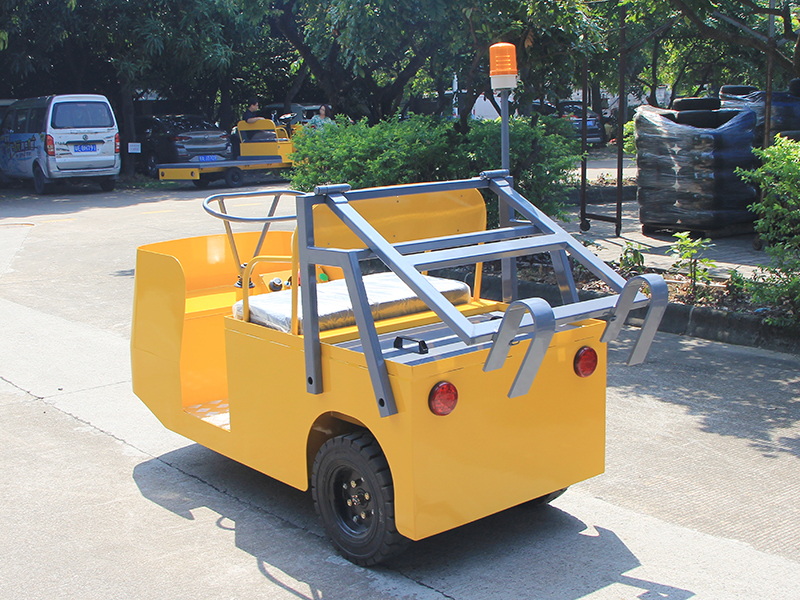Content Menu
● Understanding Electric Towing Tractors
● The Importance of Customization
>> Why Standard Models May Not Suffice
>> Customization as a Strategic Advantage
● Key Customization Options for Electric Towing Tractors
>> 1. Towing Capacity and Structural Dimensions
>> 2. Hook, Hitch, and Coupling Systems
>> 3. Operator Cabins and Controls
>> 4. Battery and Power Systems
>> 5. Safety and Monitoring Features
>> 6. Industry-Specific Add-ons
● Industry-Specific Customization Examples
>> Automotive Industry
>> Aerospace Industry
>> Healthcare & Pharmaceuticals
>> Logistics and Warehousing
● Production and Implementation of Custom Electric Towing Tractors
● Benefits and Challenges of Customization
>> Benefits
>> Challenges
● Emerging Technologies in Custom Electric Tow Tractors
>> Autonomous Operation
>> Internet of Things (IoT) and Real-Time Data
>> Modular Design
>> Energy Innovations
>> Advanced User Interfaces
● Conclusion
● FAQ
>> 1. What are the most common customizations for electric towing tractors?
>> 2. Can electric towing tractors be adapted for outdoor use?
>> 3. How does customization impact the cost and lead time?
>> 4. Are there industry standards for customizing electric towing tractors?
>> 5. Can existing electric towing tractors be retrofitted with custom features?
Electric towing tractors have become indispensable in various industries, including manufacturing, logistics, healthcare, and aerospace. Their role in enhancing operational efficiency, reducing emissions, and improving safety is undeniable. However, no two workplaces are exactly alike, and the ability to customize these tractors to meet specific operational demands is a key factor in maximizing their value. This comprehensive article delves into the electric towing tractors that offer the best customization options, exploring the types of customizations available, their benefits, challenges, and future trends shaping this vital equipment segment.

Understanding Electric Towing Tractors
Electric towing tractors are specialized vehicles designed primarily for pulling trailers, carts, or other loads within controlled environments such as warehouses, factories, airports, and hospitals. Unlike forklifts, which lift and transport loads, towing tractors focus on moving multiple trailers or heavy loads over short to medium distances with high maneuverability and low emissions.
Powered by electric motors, these tractors offer quiet operation, zero local emissions, and lower maintenance compared to diesel or gas-powered alternatives. Their design emphasizes towing capacity, operator comfort, and adaptability to diverse industrial environments.
The Importance of Customization
Why Standard Models May Not Suffice
While off-the-shelf electric towing tractors serve many general purposes, they often fall short when specific operational needs arise. For example, a tractor designed for light-duty towing in a climate-controlled warehouse may not perform well in an outdoor airport setting with rough terrain and extreme weather conditions. Similarly, industries like pharmaceuticals require hygienic, easy-to-clean surfaces and enclosed cabins to meet stringent regulations.
Customization as a Strategic Advantage
Customizing electric towing tractors enables businesses to:
- Optimize Performance: Tailoring towing capacity, traction, and dimensions to specific load types and workflows.
- Enhance Safety: Integrating advanced safety features designed to mitigate risks unique to the operation.
- Improve Operator Comfort: Designing ergonomic cabins and controls to reduce fatigue and increase productivity.
- Ensure Regulatory Compliance: Meeting industry-specific standards, such as cleanroom compatibility or hazardous material handling.
- Increase Lifecycle Value: Reducing downtime and maintenance costs through purpose-built designs.
Key Customization Options for Electric Towing Tractors
Customization can be broadly categorized into mechanical, electrical, ergonomic, and digital enhancements. Below are the most impactful customization areas:
1. Towing Capacity and Structural Dimensions
The towing capacity of electric tractors ranges widely-from light-duty models capable of pulling 1-2 tons to heavy-duty tractors that can tow over 25 tons. Customization includes:
- Reinforced Chassis: To handle heavier loads and reduce frame flexing.
- Extended Wheelbase or Compact Design: Depending on maneuverability requirements, such as tight warehouse aisles or open yard spaces.
- Specialized Tires: Non-marking tires for indoor use or rugged tires for outdoor terrain.
2. Hook, Hitch, and Coupling Systems
Trailer compatibility is critical. Custom options include:
- Adjustable Height Hooks: To match various trailer heights for safe and efficient coupling.
- Multi-Trailer Hitches: Allowing one tractor to tow multiple trailers simultaneously.
- Automatic Couplers: Enabling hands-free trailer attachment/detachment, speeding up operations and reducing operator strain.
- Specialized Coupling Systems: For unique trailer types or industry-specific requirements.
3. Operator Cabins and Controls
Operator comfort and control precision directly affect productivity and safety. Custom cabin options include:
- Open vs. Enclosed Cabins: Enclosed cabins with climate control for outdoor or temperature-sensitive environments.
- Ergonomic Seating: Adjustable seats with suspension systems to reduce operator fatigue.
- Customizable Controls: Joystick, touchscreen interfaces, programmable buttons, and multi-language displays.
- Visibility Enhancements: Panoramic windows, rearview cameras, and LED work lights for improved safety.
4. Battery and Power Systems
Battery technology and power management are crucial for operational uptime:
- Battery Types: Lead-acid, AGM, or lithium-ion batteries, each with trade-offs in cost, weight, and charging speed.
- Capacity Customization: Larger batteries for extended shifts or continuous operation.
- Charging Solutions: Fast-charging stations, opportunity charging, or swappable battery packs to minimize downtime.
- Energy Recovery Systems: Regenerative braking to improve energy efficiency.
5. Safety and Monitoring Features
Safety customizations are paramount, especially in busy or hazardous environments:
- Advanced Braking Systems: Four-wheel disc brakes with anti-lock functionality.
- Operator Presence Sensors: Prevent accidental movement when the operator is not seated.
- Speed Limiters and Geo-Fencing: To control speed in sensitive areas.
- Warning Systems: Audible alarms, flashing lights, and proximity sensors to alert pedestrians and other vehicles.
- Telematics and Remote Diagnostics: Real-time monitoring of vehicle health, location, and usage patterns to enable predictive maintenance.
6. Industry-Specific Add-ons
Different industries impose unique requirements that drive customization:
- Weatherproofing: Sealed electronics, corrosion-resistant materials, and all-terrain tires for outdoor environments like airports, seaports, and construction sites.
- Sanitization Features: Stainless steel or antimicrobial surfaces, easy-to-clean designs, and enclosed cabins for food processing, pharmaceuticals, and healthcare.
- Load Handling Attachments: Custom platforms, baskets, or cradles designed for unusual cargo shapes or delicate materials.
- Integration with Facility Systems: Compatibility with warehouse management systems (WMS), enterprise resource planning (ERP), and fleet management software.

Industry-Specific Customization Examples
Automotive Industry
In automotive manufacturing plants, electric towing tractors are customized with high towing capacities and multi-trailer hitches to transport vehicle parts efficiently. Enhanced safety features and ergonomic controls help operators navigate complex factory layouts while maintaining productivity.
Aerospace Industry
Aerospace manufacturing requires precision and cleanliness. Tractors used here often feature cleanroom-compatible materials, enclosed cabins with HEPA filtration, and ultra-precise control systems to handle sensitive components without contamination or damage.
Healthcare & Pharmaceuticals
Hospitals and pharmaceutical plants demand electric towing tractors with hygienic surfaces, enclosed cabins with air filtration, and easy-to-sanitize controls. These tractors often include quiet operation modes to minimize disruption in sensitive environments.
Logistics and Warehousing
Warehouses benefit from customizable tractors with compact designs for narrow aisles, programmable speed and braking profiles, and telematics integration to optimize fleet management and reduce energy consumption.
Production and Implementation of Custom Electric Towing Tractors
The customization process typically follows these stages:
1. Needs Assessment: Detailed consultation to understand operational requirements, load types, environmental conditions, and regulatory constraints.
2. Design and Engineering: CAD modeling and engineering to develop custom components and systems.
3. Prototyping: Building and testing prototypes to validate performance, safety, and integration.
4. Manufacturing: Production of the customized tractor with quality control checks.
5. Delivery and Training: On-site delivery, operator training, and documentation.
6. After-Sales Support: Maintenance contracts, software updates, and retrofit options as operational needs evolve.
Manufacturers often work closely with clients throughout the process, ensuring that the final product aligns perfectly with operational goals.
Benefits and Challenges of Customization
Benefits
- Operational Efficiency: Equipment tailored to specific tasks reduces cycle times and increases throughput.
- Safety Improvements: Custom safety features reduce accidents and liability.
- Regulatory Compliance: Ensures adherence to industry standards and local laws.
- Lower Long-Term Costs: Reduced wear and tear, fewer breakdowns, and optimized energy use.
- Enhanced Operator Satisfaction: Ergonomic and user-friendly designs improve morale and reduce turnover.
Challenges
- Higher Upfront Investment: Customization requires additional design and engineering resources.
- Longer Delivery Times: Prototyping and testing extend lead times compared to standard models.
- Complexity Management: More features and systems can increase maintenance complexity.
- Training Requirements: Operators and maintenance personnel may need specialized training.
Emerging Technologies in Custom Electric Tow Tractors
The future of electric towing tractors is being shaped by several exciting technological trends:
Autonomous Operation
Self-driving electric towing tractors equipped with AI, LiDAR, and GPS are being piloted in warehouses and airports. These autonomous vehicles can follow pre-programmed routes, avoid obstacles, and operate continuously with minimal human intervention, increasing efficiency and safety.
Internet of Things (IoT) and Real-Time Data
IoT-enabled tractors provide continuous data on battery status, location, load weight, and operator behavior. This data supports predictive maintenance, fleet optimization, and energy management.
Modular Design
Modular components such as interchangeable cabins, battery packs, and coupling systems allow operators to quickly reconfigure tractors for different tasks, reducing the need for multiple specialized vehicles.
Energy Innovations
Solar-assisted charging stations, energy recovery through regenerative braking, and next-generation battery chemistries are extending operational time and reducing environmental impact.
Advanced User Interfaces
Voice control, gesture recognition, augmented reality (AR) for maintenance support, and customizable touchscreen dashboards improve operator interaction and reduce errors.
Conclusion
Electric towing tractors with extensive customization options represent the pinnacle of operational efficiency, safety, and adaptability in material handling and logistics. By tailoring towing capacity, controls, safety systems, and ergonomic features to specific industry needs, businesses can achieve significant productivity gains and cost savings. While customization involves higher initial costs and longer lead times, the long-term benefits in reduced downtime, enhanced safety, and regulatory compliance make it a strategic investment. Emerging technologies such as autonomy, IoT integration, and modular designs promise to further expand the customization landscape, ensuring electric towing tractors remain indispensable assets in the evolving industrial ecosystem.

FAQ
1. What are the most common customizations for electric towing tractors?
Common customizations include adjustable towing hooks, specialized hitches, enhanced safety features like sensors and alarms, ergonomic operator cabins, battery upgrades for extended runtime, and programmable control systems tailored to specific workflows.
2. Can electric towing tractors be adapted for outdoor use?
Yes, they can be equipped with weatherproof cabins, rugged tires, sealed electronics, and climate control systems to operate effectively in outdoor environments such as airports, seaports, and industrial yards.
3. How does customization impact the cost and lead time?
Customization typically increases both the initial purchase price and delivery time due to the need for design, prototyping, and testing. However, these upfront investments often result in improved efficiency, safety, and lower operational costs over the tractor's lifespan.
4. Are there industry standards for customizing electric towing tractors?
While general safety and performance standards such as ISO and OSHA apply, customization is usually driven by specific client needs and industry regulations. Manufacturers collaborate closely with clients to ensure compliance with relevant standards.
5. Can existing electric towing tractors be retrofitted with custom features?
Many existing tractors can be upgraded with new safety systems, telematics, control interfaces, and coupling mechanisms. However, major modifications like chassis reinforcement or towing capacity changes may require new equipment or extensive engineering.










































